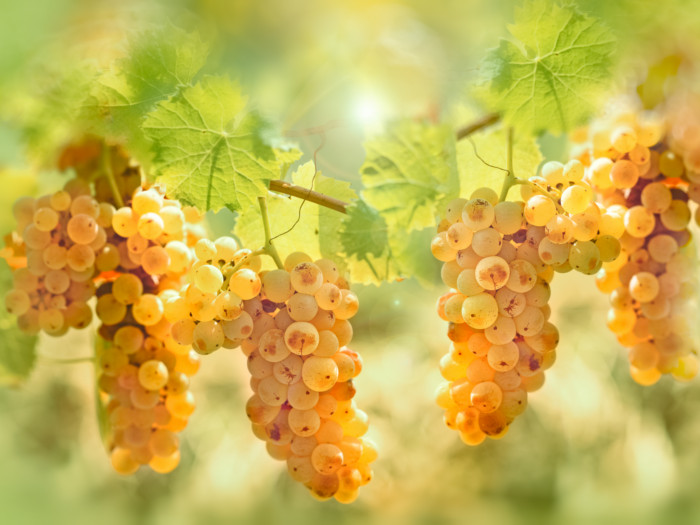Drinking a glass of Riesling is a refreshing summer pastime, but this popular wine also has potential health benefits, when taken in moderation.
What is Riesling?
Riesling is a white wine that originated in the Rhine region of Germany, and some wine experts lament this as the most misunderstood modern wine. In the last century, people have known the wine to be sweet and of low quality, but a shift in respect for the grape has put more high-quality white varieties into the market.

Riesling is an aromatic white grape variety which originated in the Rhine region. Photo Credit: Shutterstock
Many people wonder if this wine variety is sweet or dry, but surprisingly, it can be both. The way this wine is fermented will either leave some sugars or convert them all to alcohol. Its elegant aromas and fruity taste can be enjoyed in dry or sweet fermentations. A good trick for determining its taste is to check the alcohol content, which varies from 8% in sweeter varieties to 12.5%, indicating a drier wine. [1]
A variety of red grapes does exist, but few farmers cultivate them. Curiosity about their flavor is growing, so if you happen to see a red variety of this wine, take advantage of a rare opportunity! [2]
Types
There are mainly two types of Riesling, they include the following:
- Dry: The term ‘dry’ refers to wine in which yeast converts all the sugars into alcohol during fermentation. Dry Rieslings taste very crisp and may have subtle notes of citrus.
- Sweet: Sweet wines are prepared by stopping the fermentation process while sugars are still present. Sweet varieties will show off the fruitiness of the grapes, balanced with the minerality of German soil. [4]
Nutrition Facts
A standard serving (5 ounces) glass of Riesling has about 120-130 calories. Grape skins are packed with antioxidants, which help prevent chronic diseases, and doctors agree that drinking wine in moderation can help to improve overall health. [5] [6]
Adverse Risks Associated with Alcohol Consumption: Moderation is key. The risks involved with drinking excessive alcohol can be short term such as violence and injuries to long-term health risks such as chronic diseases. According to the Centers for Disease Control and Prevention, people who should not drink alcohol include women who are pregnant, individuals younger than 21 years of age, and people who are recovering from alcoholism or cannot control the amount they drink. Also, it should be avoided by people who are planning to drive or any other activity that required focus. [7] [8]
Riesling vs Chardonnay
Though both are made from white grapes, location and aging make for two very different wines.
- Origin: Riesling is from Germany, while Chardonnay is from France.
- Aging: Riesling is a ‘young’ wine, and not aged in new oak. Chardonnay is aged in oak, which contributes the vanilla and caramel notes. [9]
- Use: Riesling can be used to make sparkling wine. Chardonnay is the primary grape used to make authentic Champagne.
